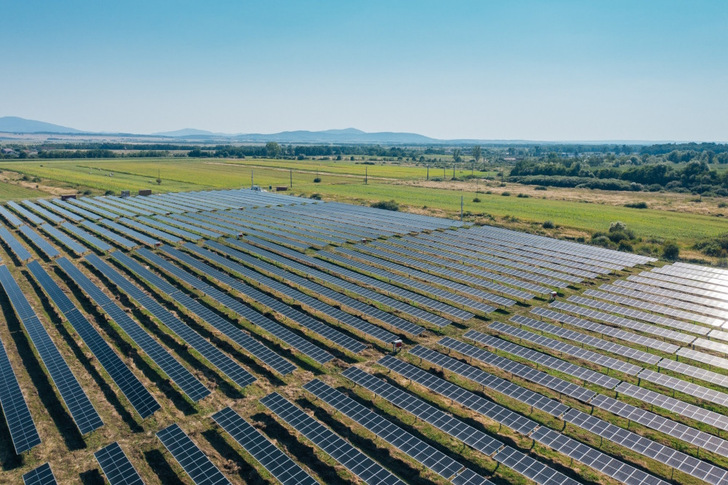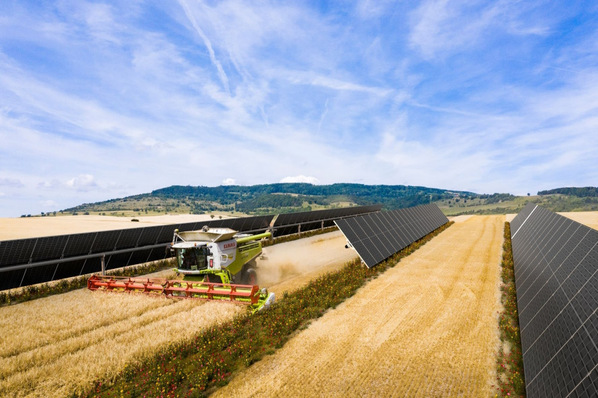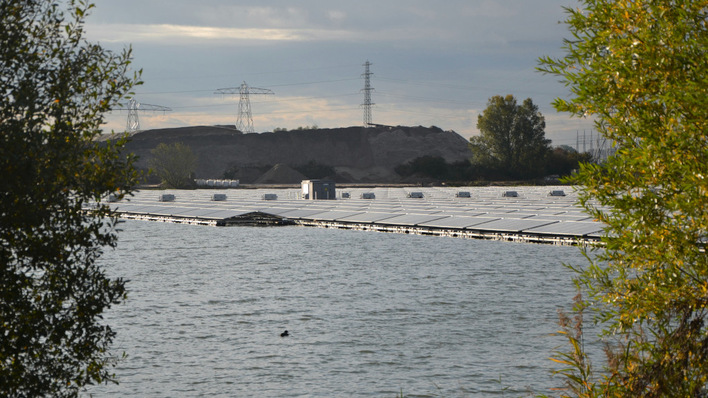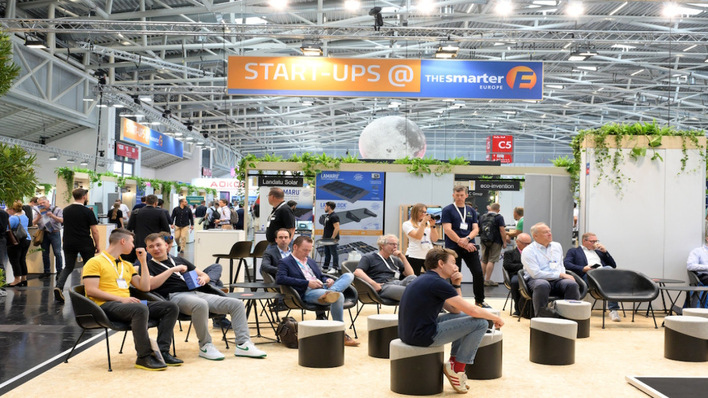New PV systems with a capacity of 4.6 GW were installed in Poland in 2023, with installed capacity rising to over 15 GW. However, at 100 megawatts (MW), the market only grew slightly compared to the previous year (change in the support scheme for private households, falling electricity prices) and increasingly shifted to larger rooftop systems and solar parks. Overall, further stable growth in photovoltaics is expected in Poland.
Hungary was the second strongest solar market in Central and Eastern Europe last year. PV installations increased by 1.6 GW (plus 45%, 2022, 1.1 GW) and installed capacity climbed to 5.6 GW. Challenges for further growth are grid capacities and the design of incentive programs for PV storage systems for private households under the new “gross metering” subsidy regime.
First tenders for PV storage systems in Bulgaria
The solar market in Bulgaria has tripled in the past three years. Installed PV capacity rose from just over 1 GW at the beginning of 2021 to almost 3 GW at the end of last year. In 2023, the PV expansion amounted to around 1 GW. In the summer of 2023, the share of photovoltaics in the electricity mix was over 40% in some cases, albeit only for a few hours. With an average annual sunshine duration of between 2,000 and 2,600 hours in various regions, the country offers high solar irradiation potential.
See also: Bulgaria – 55 MWh battery energy storage system deployed
The Bulgarian PV market is strongly characterized by large-scale systems. Due to the high energy prices, the first major corporate PPAs (Purchase Power Agreements) were concluded last year. The first combined tendering round for renewable generation plants (1.995 GW) with combined energy storage (350 MW/700 MWh) was launched in Bulgaria at the beginning of this year. The dynamic growth of the Bulgarian PV market, which is expected to continue, depends not only on progress in grid expansion but also heavily on increased investment in energy storage technologies.
Growth of 300 percent in Romania
In terms of volume, the photovoltaic market in Romania is roughly on a par with Bulgaria. Around 2.9 GW of solar power capacity was installed there at the end of last year. PV installations also increased by around 1 GW in 2023, an increase of over 300% compared to the previous year. The main drivers of this strong growth are private households and commercial enterprises, but larger systems are also growing strongly. At the end of October 2023, for example, the country's largest solar park to date was inaugurated in Ratesi with 155 MW and a forecast annual electricity yield of around 220 gigawatt hours (GWh). Romania also scores with 1,900 to 2,400 hours of sunshine per year.
Also see: Romania – R.Power expands PV projects
Backing is also coming from politicians. The Romanian government has announced an increase in the target for the expansion of photovoltaics to 8.3 GW by 2030 as part of the National Energy and Climate Plan, of which 2.5 GW is for roof systems and 5.8 GW for solar parks. Although this is still below the EU targets for the expansion of renewable energies, it is an important step. In addition, the approval procedures for solar parks with an area of less than 50 hectares and an output of up to 42 MW have been simplified, the grid connection procedures for solar installations up to 400 kilowatts (kW) have been streamlined and direct marketing options for surplus electricity for installations of this size have been expanded. An important challenge for the further growth of photovoltaics in Romania is also the expansion of the grid and its financing.
Revival of PV in the Czech Republic
The Czech Republic is also almost back in the GW club - after 13 years. New PV systems with a capacity of 970 MW were installed in 2023. The total installed PV capacity climbed to 3.5 GW. The Czech solar market thus grew by 236% compared to the previous year. More than 170,000 PV systems are now feeding electricity into the grid, including more than 150,000 on the roofs of single-family homes. The Czech Republic already experienced a solar boom in 2009 and 2010, with more than 2 GW added in both years.
The Czech solar market has been recovering since 2021: administrative barriers were removed, new subsidy programs were launched - and the energy crisis triggered by the Russian invasion of Ukraine increased demand for PV, especially in the building sector. Most PV systems were also installed on rooftops in 2023. This trend is expected to continue, but larger commercial solar roofs and solar parks are also increasingly being built. A further PV expansion of over 10 GW is forecast by 2030.
The PV market is also picking up in Slovakia
With a total installed capacity of just over 0.7 GW of PV, Slovakia is below the EU average. However, the solar market is also picking up there. PV installations amounted to 220 MW in 2023, primarily private and commercial rooftop systems. A newly launched subsidy program for the purchase and installation of PV systems also had an impact here. It is expected that 300 MW of new solar power systems will be installed in 2024.
One of the factors holding back the construction of solar parks in Slovakia is the high grid connection costs that operators have to bear. In a medium scenario, SolarPower Europe expects the installed PV capacity in Slovakia to climb to 2.6 GW by 20230. However, the National Climate and Energy Plan (NECP) only envisages a total solar power capacity of 1.4 GW in 2030.
Transparent grid access in Estonia
The solar market is also developing dynamically in the Baltic states, driven by the desire for greater energy independence. In 2023, Estonia surpassed the 1 GW mark for total installed PV generation capacity with 1.1 GW. The installed solar power output per capita in Latvia climbed from 601 watts (W/c) to 803 W/c. This put Latvia in 5th place in the European ranking, just behind Belgium (810 W/c) and ahead of Spain (748 W/c). Auctions for renewable energies have been in place since 2022 and several new solar parks in the double-digit MW range were put into operation last year.
The transparent design of grid access in Estonia is considered exemplary. The available capacities are displayed on the grid operator's website in real time. In addition, the first tenders for large battery storage systems to stabilize the electricity grid were launched in 2023. According to the NECP, the installed PV capacity is set to increase to 1.2 GW by 2030. However, SolarPower Europe estimates much stronger growth to 4.8 GW by 2030 in a medium scenario.
Lithuania relies heavily on prosumers
PV systems with a cumulative capacity of 1.1 GW were also installed in Lithuania by the end of 2023. The country is also in the process of transforming its energy supply. By 2030, the country aims to cover 100% of its electricity demand from renewable sources and increase its installed PV capacity to 5.1 GW. There is a strong political focus on promoting prosumers, including in the commercial sector. From 2015 to 2023, around 80,000 prosumers were connected to the grid, with a combined PV capacity of 825 MW. In future, energy communities are also to be increasingly facilitated.
Also interesting: Lithuania – pilot projects with solar noise barriers
The conversion of the billing system from net metering to net billing is also currently being discussed in Lithuania. Energy storage systems for households are also to be increasingly promoted and expanded, as are large hybrid systems (PV or wind power with energy storage). The approval process for solar parks has been streamlined and the grid access procedure has been reorganized. One challenge, however, is the currently unclear application of feed-in curtailment for solar and wind parks to stabilize the grid.
High energy prices are driving PV in Latvia
Photovoltaics is still a tender plant in Latvia, but this could soon change. Just 300 MW of PV capacity was connected to the grid at the end of 2023 - but still three times as much as in the previous year. Due to high energy prices, low-cost photovoltaics are increasingly attracting the interest of investors in Latvia. The realization of the first larger solar parks with 400 MW and 155 MW was announced in 2023. The first floating PV system with an output of 2 MW was also completed in a sewage treatment plant. In any case, the latest European Market Outlook for Solar Power forcasts that photovoltaics will play an increasingly important role in achieving the government's target of covering 50% of energy requirements from renewable sources by 2030. (hcn)








